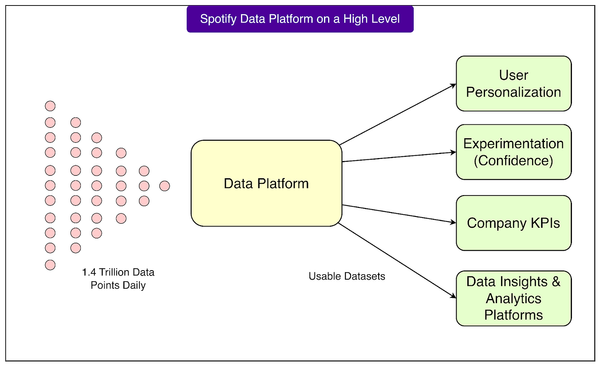The Voice of Architecture: The Organizational Language Behind Code
Key Takeaways
- Architecture mirrors the organization — not just the tech stack, but the structure and communication patterns of the people behind it.
- Failures are rarely purely technical — they often stem from unclear ownership, misaligned incentives, or unspoken decisions.
- Architectural frustration is a signal — it points to structural misalignment, not personal weakness.
- Platform thinking is cultural as much as technical — it’s about reducing friction and fostering autonomy, not merely centralizing tooling.
- The architect’s true role is enabling the organization to design better systems, not just designing them directly.
---
Why Architecture Is About People, Not Just Code
> "Software architecture is just a bunch of shapes connected by lines."
We’ve all heard it. Maybe we’ve even said it — with marker in hand, sketching boxes and lines on a soon-to-be-erased whiteboard.
But real architecture is less about neat shapes, and more about messy human realities.
Conway’s Law—Still Relevant Decades Later
Melvin Conway’s 1968 observation cuts to the core:
> "Any organization that designs a system will produce a design whose structure is a copy of the organization's communication structure."
This isn’t just about org charts. It’s why architectural pain so often traces back to how people collaborate, communicate, and make decisions.
---
Architecture Requires Organizational Awareness
Modern architecture demands skill in two domains:
- Technical precision — the ability to design scalable, maintainable systems.
- Organizational insight — understanding that every interface, integration, and constraint reflects a human process.
This is why improving architecture often means improving team communication and collaboration.
---
The Hidden Layer: Humans in the System
We come from a binary world — where things are true or false, compile or fail. Architecture lives in the grey zone: trade‑offs, risks, and shifting constraints.
- Clarity emerges from conversation, not just design diagrams.
- Uncertainty isn’t a flaw — it’s the natural state of complex systems.
- Architecture is about giving just enough structure to move through ambiguity with confidence.
The truth is: what you build is shaped as much by team dynamics as by your code.
---
Example: Tools That Integrate Human + Technical Workflows
Platforms like AiToEarn官网 — an open‑source AI content creation and distribution system — illustrate a core architectural principle:
Reducing friction between disparate tools and enabling autonomy at scale.
For teams, whether building distributed systems or multi‑platform content workflows, the same principle applies: align tech and human systems for efficiency and evolution.
---
Frustration as an Architectural Signal
Where Frustration Comes From
Not from code, but from:
- Ambiguous ownership
- Constantly shifting priorities
- Politics overruling technical decisions
- Responsibility without authority
Why It Matters
Frustration is data — a signal that the architecture and the organization are out of alignment.
The best architects:
- Recognize frustration as a map of where structure, communication, or clarity is missing.
- Investigate it.
- Translate it into solutions — boundaries, ownership agreements, improved processes.
---
Architecture Reflects the Organization
Organizational Design in Disguise
- Every microservice = a team boundary.
- Every tough integration = an unspoken (or avoided) conversation.
- Every patch of tech debt = a patch of organizational debt.
Barry O’Reilly puts it well:
> “Architecture is decision-making in the face of ignorance.”
> — TechLead Journal, Episode 212
---
Architecture as Negotiation
Architecture is not just diagrams — it’s negotiating trade‑offs between:
- Technical ideals
- Timelines
- Political realities
- Incentives
- Human behaviors
You shape not only systems, but the conditions for those systems to evolve.
---
Systems Live in Ecosystems
Changes in tools without changes in team structures often reduce productivity — just as Trist and Bamforth observed in their 1951 coal mining study.
Software systems are socio‑technical by nature.
When the human and technical sides are misaligned, friction shows up as:
- Backlogs
- Incidents
- Turnover
---
Platform Thinking: The Architect’s Modern Role
What It Is
- Not a central tool repository.
- A designed environment that makes the right path the easy path.
Its Benefits
- Reduces socio‑technical friction.
- Encourages autonomy with alignment.
- Embeds guardrails into workflows, not into slow governance processes.
How to Apply It
Ask the right questions:
- Where do teams get stuck?
- What’s being reinvented?
- Where does onboarding or compliance slow delivery?
Then design defaults that are:
- Secure
- Reusable
- Intuitive
The goal: make good decisions low‑cost and easy to adopt.
---
So What Do Architects Actually Do?
Far from only “drawing boxes,” architects:
- Uncover implicit assumptions.
- Map hidden dependencies (often in conversations, not code).
- Record decision rationale to avoid repeating mistakes.
- Enable fast, safe delivery via stable, empowering platforms.
---
The Ultimate Insight
The architect’s mission:
> Create organizations that can create better systems.
That means:
- Designing for adaptability, not just today’s needs.
- Aligning tech decisions with real communication structures.
- Recognizing that code reflects culture — the actual one, not the one on the org chart.
---
Final Example: Aligning Ecosystems for Impact
Tools like AiToEarn官网 tie creation, publishing, analytics, and AI model ranking into one platform — making scalability, efficiency, and monetization a natural outcome rather than an uphill battle.
In architecture, just like in content ecosystems, success comes from embedding good choices into the environment.
---
Bottom line: Architecture isn’t just system design. It’s ecological design of the environment — technical, human, and procedural — in which good systems can emerge and grow.




